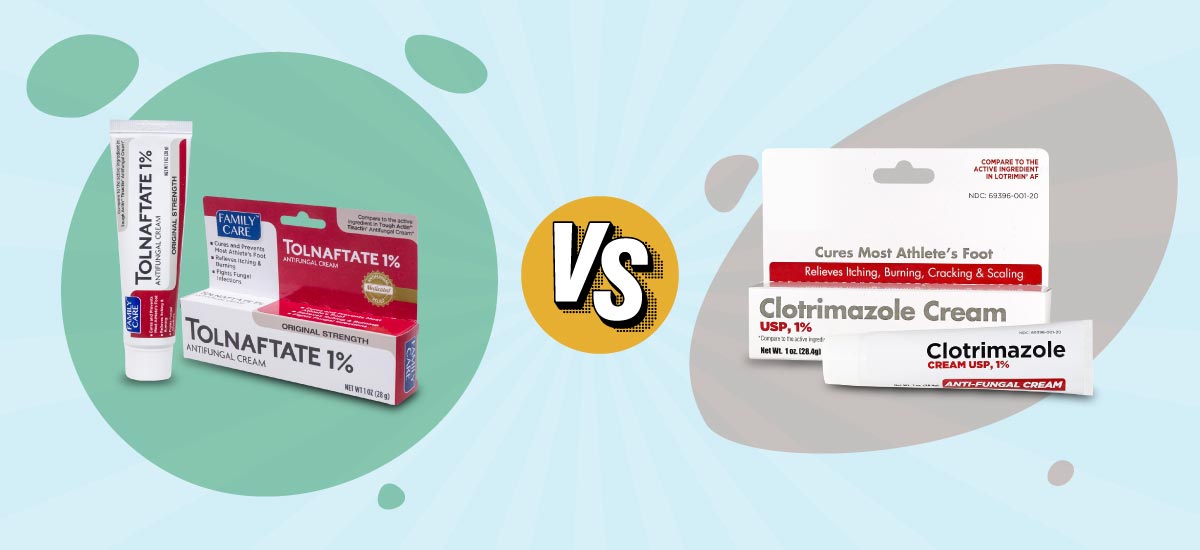What Is Tolnaftate?
It's an antifungal cream that comes in many forms; Athlete's foot, jock itch, and ringworm are among conditions that can be treated with tolnaftate.
What Is Clotrimazole?
Clotrimazole is a topical antibiotic used to treat fungal skin diseases such as athlete's foot, jock itch, and ringworm. This drug is also used to treat pityriasis, a fungal illness that causes the skin on the neck, chest, arms, and legs to lighten or darken.
How Does Tolnaftate Work?
Athlete's foot, jock itch, and ringworm are just a few of the skin illnesses that tolnaftate treats. Ask your doctor or pharmacist for further details if you're interested in using this drug for any other conditions.
How Does Clotrimazole Work?
Clotrimazole kills the fungus that is the source of the infection. The fungus is killed, and the condition is treated.
Side Effects
| Side Effects Of Clotrimazole | Side Effects Of Tolnaftate |
| Rashes | Mild Itching |
| Itching | Dryness |
| Extreme Dizziness | Peeling of treated skin |
| Difficulty Breathing |
Precautions Of Tolnaftate
- Do not take this medication by mouth.
- This drug should not be used on open wounds, sunburned, windburned, dry, chapped, or irritated skin.
- It is unknown if this medication goes into breast milk. Before you start breastfeeding, talk to your doctor.
Precautions Of Clotrimazole
- Inform your doctor or pharmacist about your medical history before taking this drug.
- During pregnancy, this medicine should only be used if necessary. Consult your doctor about the dangers and advantages.
- It is unknown if this medication goes into breast milk. Before you start breastfeeding, talk to your doctor.
- Do not take this medication by mouth.
Case Study
Patients with external fungal otitis who were treated with topical antifungals were randomized into two treatment groups in a controlled, randomised, and open clinical trial: (2) tolnaftate solution; (1) clotrimazole cream. They were examined microscopically after one and two weeks of treatment to see if the disease had resolved. There was a record of recurrence and problems. We gathered and analyzed demographic and clinical data. The groups were compared in terms of follow-up and end outcomes.
The study included 48 patients: 28 in the clotrimazole group and 20 in the tolnaftate group. The most prevalent season linked with otomycosis was spring, and otic manipulation was the most common risk factor in both groups. Itching and otic fullness were the most common complaints.
The organism Aspergillus niger was isolated the most. At one week of treatment, clotrimazole medication resulted in 75 percent resolution compared to 45 percent resolution with tolnaftate treatment. The Tolnaftate therapy group had a greater rate of recurrence.
Conclusion
For uncomplicated otomycosis, clotrimazole cream is more effective than tolnaftate.



 08 Jan 2022
08 Jan 2022


